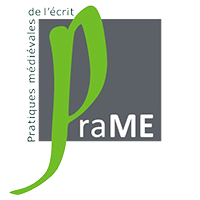Trans-disciplinary studies on parchment
Motivation
The idea of the project originates from a request by Catherine Charles, restorer at the Moretus Plantin university library, regarding the restoration of rare parchment book bindings. In view of improving her current practices, she asked to physicists if they could somehow predict the long-term durability of restored parchments. A complex and challenging question, indeed. In conservation studios, she said, there is a need to have access to easy-to-use, portable instruments for characterizing the state of degradation of parchments in a non-invasive manner. Concretely, she wondered how will the restored material evolve in time and when will it start to deteriorate. This open question, which is relevant for parchment conservation in general, calls for multidisciplinary scientific investigations: the Pergamenum21 project was born from that.
According to our colleagues of the Pratiques médiévales de l'écrit (PraME) research group, there is a growing interest in scientific methods able to identify accurately the animal species from which parchments of codices or charters were made of. Indeed, as revealed by species identification tests we carried out in MaSUN mass spectrometry facility on historical parchments of presumably known species, visual inspection may fail in identifying correctly species more often than expected. Reliable and systematic identification of parchment animal species has therefore become a key information for medievalists. When the process of writing is put in relation with parchment trade and economy, important questions emerge: were parchments chosen deliberately according to species and quality, was there a preferred species, did the choice of parchment have an impact on the writing production process, how was it related to parchment trade and economy?
The goal of the Pergamenum21 project is to develop scientific methods which could help answering those questions.
Pergamenum21 is a project of the Namur Transdisciplinary Research Impulse (NaTRIP) programme of the University of Namur. The project started in 2014 and received an additional grant in 2016 from the Fonds Jean-Jacques Comhaire of the Fondation Roi Baudouin (FRB).



